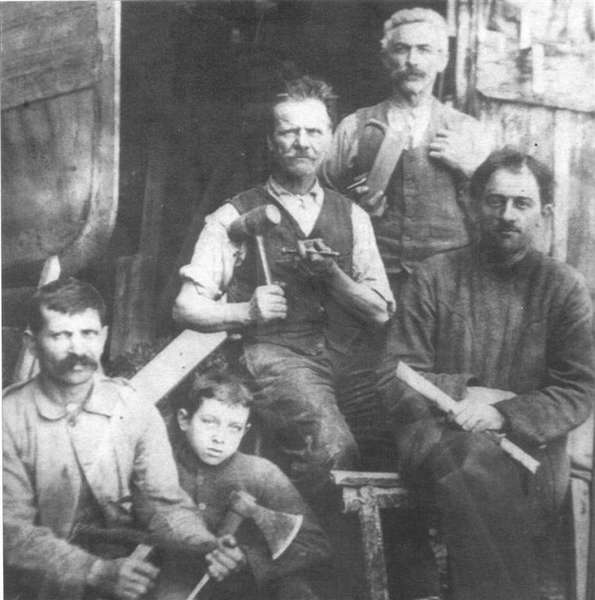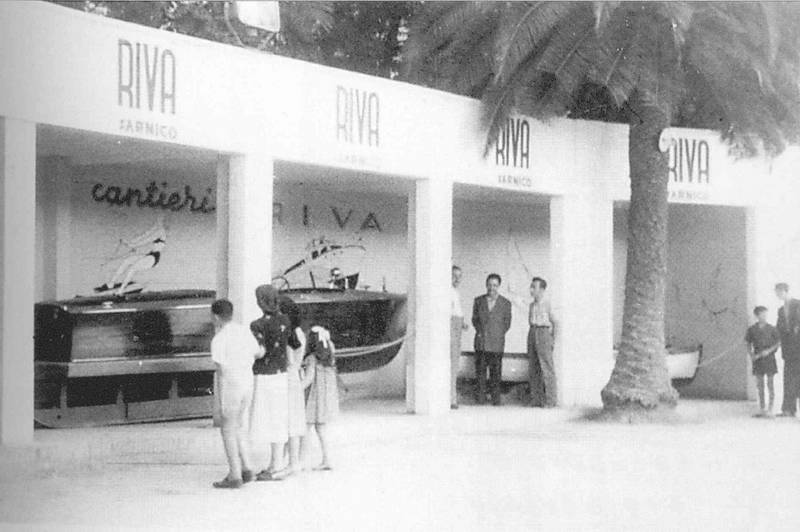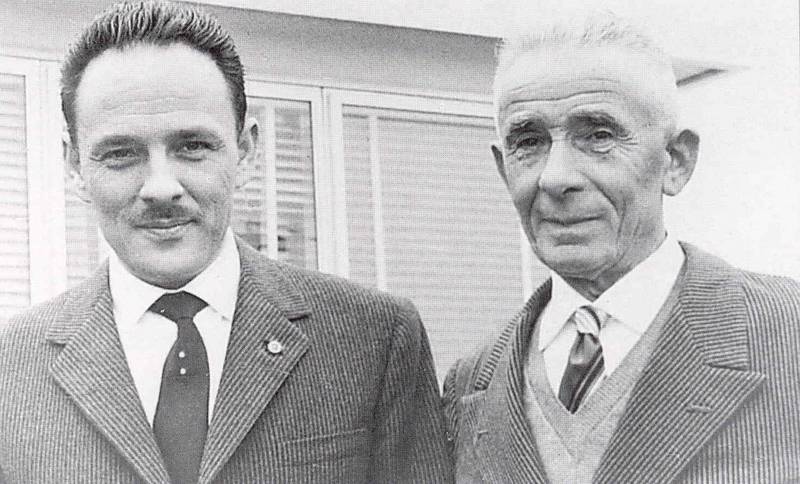The story begin exactly 100 years and 12 days before Carlo himself is born, when the ancestor Pietro Riva sees the daylight for the first time on 12 of mars in 1822. Pietro is growing up at Lake Como, another one of Italy’s mountain lakes.
He receives his education as a boat carpenter by the family Taroni, belonging to the famous “Venetian carpenters.” In 1842, only 20 years old, he moves to Lago d’Iseo to repair a couple of fishing boats for a fisherman who heard about the youth’s skills.
One job leads to another and soon Pietro Riva starts up his own yard. Ten years later, in 1852, he marries Lucrezia Taroni who gives him five children in the coming years.
Of these children, Ernesto Riva is the one that will take over from his father. Ernesto himself had six children and generational change comes suddenly, when he in May 18th in 1907 is crushed by a boat falling down from a crane unable to bear the weight.
His son Serafino is the one to be the new head of the Riva yard. As his father, Serafino is fascinated by the developments on the engine side. In 1912 he set a speed record with a small boat equipped with an outboard engine and reach the dizzying speed of 13 knots! The focus was clear and “Cantieri Riva” abandons the bigger boats in favour of racing boats and open excursion boats.
In 1922 Serafino’s wife Irma gives birth to their first child and names him Carlo Riva.
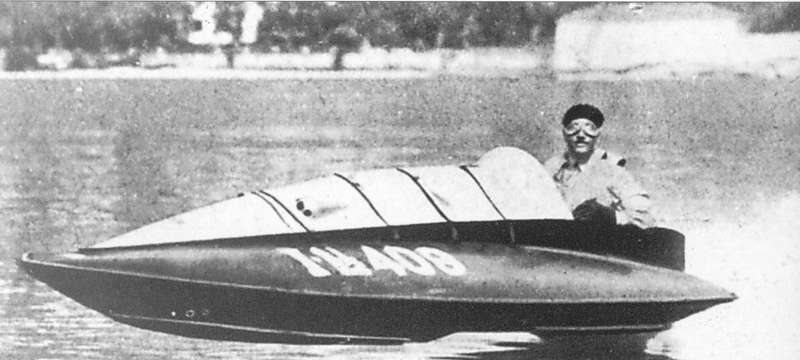 As said, Serafino’s big interest and passion came to be the speed boats. Over the years he refined their design, reaching ever higher speeds. In the 30’s his Riva Boats dominates racing competitions in Italy.
As said, Serafino’s big interest and passion came to be the speed boats. Over the years he refined their design, reaching ever higher speeds. In the 30’s his Riva Boats dominates racing competitions in Italy.
1936, when Carlo was 14 years old, he had already breathed the atmosphere at the yard for several years and begins gradually to sketch his own boats. At the library he borrows U.S. boating magazines and soon become a Chris Craft enthusiast. After completing his engineering studies in Cremona Carlo starts to work with his father as an engineer at the yard.
1939 Riva receives an order for six patrol boats to be used by the Italian defence in the ongoing war in Ethiopia. At the same time Serafino becomes seriously ill and Carlo is forced to take over the responsibility for design and construction of the boats.
During this work, when completely identical boats was to be produced, Carlo came for the first time to consider the possibility to build boats in Italy, like the the Americans already did, in a series production where all parts were uniform and interchangeable between boats of the same series.
The patrol boats are finished in 1940 and presented in the harbor outside the yard. They soon led to new orders from interested customers, but the war in Europe is imminent and fuel shortage soon make the use of motor boats impossible.
During the years of war business almost stopped and Carlo himself was called in for military service. Back at the yard in 1943, he realized that there was no money for development of new models.
In 1946, when the war was finally over, everything began to return to more normal conditions. It was now vital to show up at the boat show in Milan to confirm the continued existence of the yard. Carlo also had a fixed idea since many years back of the importance of advertising and creating an image.
Well aware that his father would never give him money for this purpose, he used the money he had for the hotel room in Milan to print his own brochure. The nights was instead spent at the house of the Lombardi family who was the Johnson outboard agent in Italy.
Despite the efforts of Carlo the yard mainly becomes a producer of racing boats again. This gives the yard international reputation, but very little money. Carlo has a completely different idea, and wants to expand the yard, rationalize production and focus on series-built boats. In that way, he said, cost and revenue will be possible to predict and unforeseen expenses can be avoided.
Serafino Riva did not line up on these ideas and his speedboat customers sees Carlo as a serious threat to their main supplier of fast racing boats at affordable prices. The disagreement leads to an increasing number of disputes between father and son. At one point Carlo should have bowed on his knees before his father and asked him to kill him with an empty bottle!
Carlo’s countermove is to advertise even more for the series produced leasure boats, thus making sure that the yard is busy with no time left building cheap racers. He participate extensively in trade shows and create good relations with the boat magazines.
Against all odds Serafino shows his son an ever increasing confidence and give Carlo his very own drawing tablet. This results in one of his most innovative designs, the AR series, that later in the 50s would come to be called “Corsaro”.
With this boat the iconic Riva-stern is introduced, with strongly negative angle of the transom and hull sides and a smoothly rounded transition between the three surfaces of the hull side, deck and transom.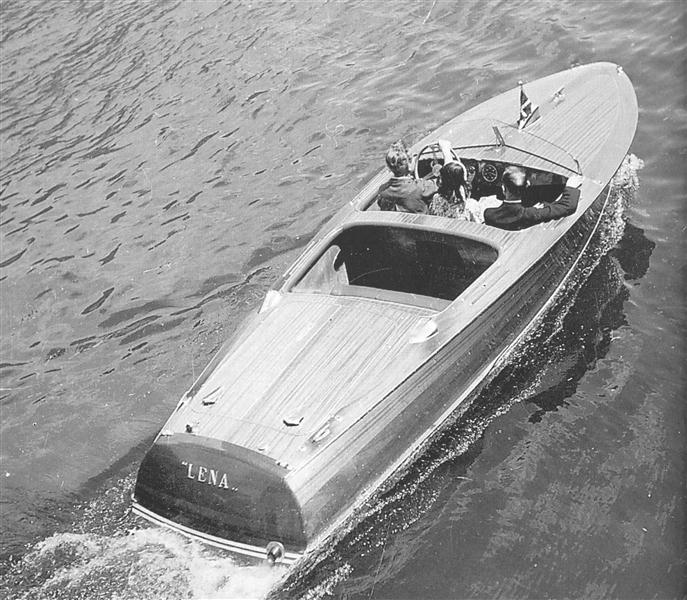
This design is also found in the AU series, which will later evaluate in the BM series, which eventually is named ARISTON in the early 50’s.
In February 1949 Carlo marries Licia Vigani, a girl that he spent time with since childhood. Given the responsibilities of a family, he want to start his own shipyard and prepares to move out.
At the same time Serafino ends up in hospital and is forced to abandon work. Carlo is given a six-month trial period as head of the yard, which later is extended to 1 year. Serafino is still sceptical to Carlos ideas and afraid to get involved in his son’s future, as he thinks, costly business. The solution is to let Carlo run his own business in a rented space behind the yard and build his own shed.
Carlo, with no major savings of his own, turns to his friend Cavalier Beretta, the famous weapon manufacturer. Through his merchandise he gets a loan of 3 million Lira and a bank credit of 2 millions. Now he can finance his own activities.
One of his first financial decisions is to double the price of the racing boats. By this move racing sales go down and he gets more space for his modern series built pleasure crafts.
From now on, he has taken a course that he won’t let go. The work to continuously improve and enhance production and quality had only just begun.
In 1950 Carlo’s money runs out after investing the borrowed capital in the expansion of the yard. By hard work 13-14 hours per day he manage anyhow to build six different boats just in time for the Milan boat show.
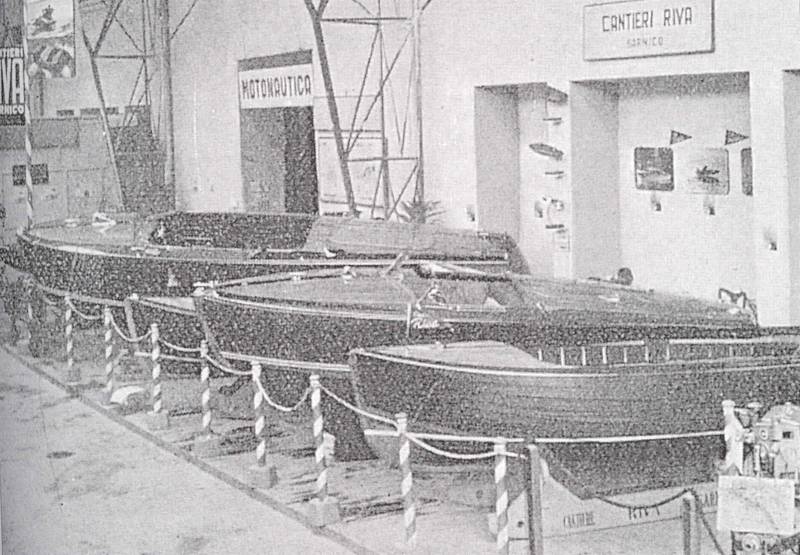 It is said that Carlo and his future brother in law Gino Gervasoni, who joined the company the year before, took the customers to Grand Hotel in Milan during day time, while at night they slept in Lombardi’s warehouse of Johnson outboards. His hard work give results and during the year he biuld and sells 54 boats, a new record for the yard.
It is said that Carlo and his future brother in law Gino Gervasoni, who joined the company the year before, took the customers to Grand Hotel in Milan during day time, while at night they slept in Lombardi’s warehouse of Johnson outboards. His hard work give results and during the year he biuld and sells 54 boats, a new record for the yard.
This trend is continued the year after and in 1952, for the first time, Carlo give one of his series built boats a name with the introduction of the model “Sebino”. Its named by the ancient name for the home water of Lago d’Iseo.
One of the best known Riva models, the Ariston (initially only called “BM”), is named after a visit by Carlo and Gino Gervasoni to a cinema in Milano with the same name.
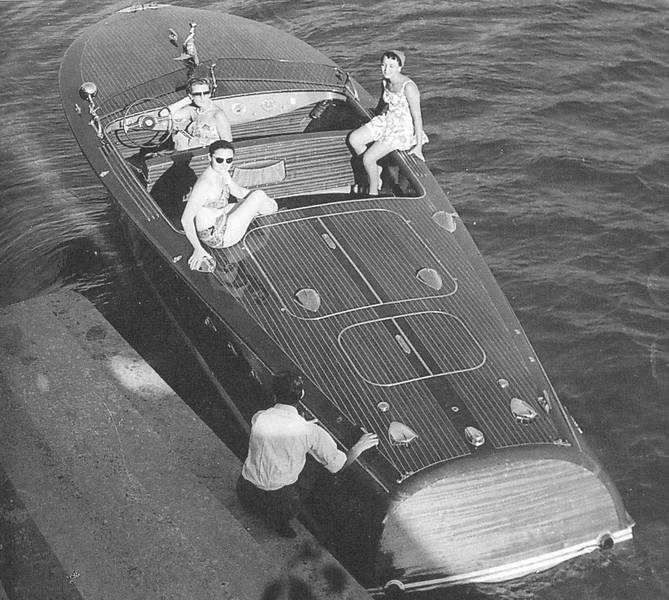 Carlo cease the production of all racing boats in 1953 and in the coming years the production is entirely focused on standard models. Production increases and pass more then 100 boats a year in 1954. Until then, only single engine boats were built, except for some prototypes and special ones.
Carlo cease the production of all racing boats in 1953 and in the coming years the production is entirely focused on standard models. Production increases and pass more then 100 boats a year in 1954. Until then, only single engine boats were built, except for some prototypes and special ones.
From 1954 the Riva Tritone, based on the model BQ, is introduced with twin engines and lengthened to almost 8 metres. Now Carlo has a boat good enough for use at the sea and not just in the great lakes.
1957 will be a very successful year, with nearly 200 boats built. This is the level, with only small differences up and down, that the production will stay at during the heydays of the wooden boats another 14 years ahead.
During these glorious years just over 4000 boats are built. A few years later, when the era of glass fibre reinforced boats takes over, only few wooden boats are built sporadically. The very last mahogany Riva leaves the yard in 1996.
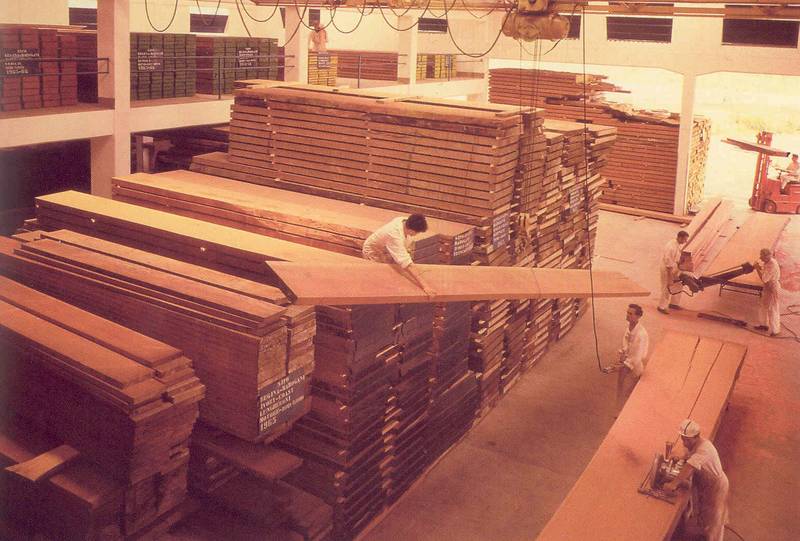 Throughout his period as the yard owner and manager Carlo develope his almost manic urge to improve and streamline the series production. For example, he had a special mania for color. Everything in the yard was color coded and linked to a specific task or boat model. If you found a green marked mahogany plank that lay in store for drying you would know that it was designated for the Ariston model. All templates, special tools and construction plans were also labelled in this way.
Throughout his period as the yard owner and manager Carlo develope his almost manic urge to improve and streamline the series production. For example, he had a special mania for color. Everything in the yard was color coded and linked to a specific task or boat model. If you found a green marked mahogany plank that lay in store for drying you would know that it was designated for the Ariston model. All templates, special tools and construction plans were also labelled in this way.
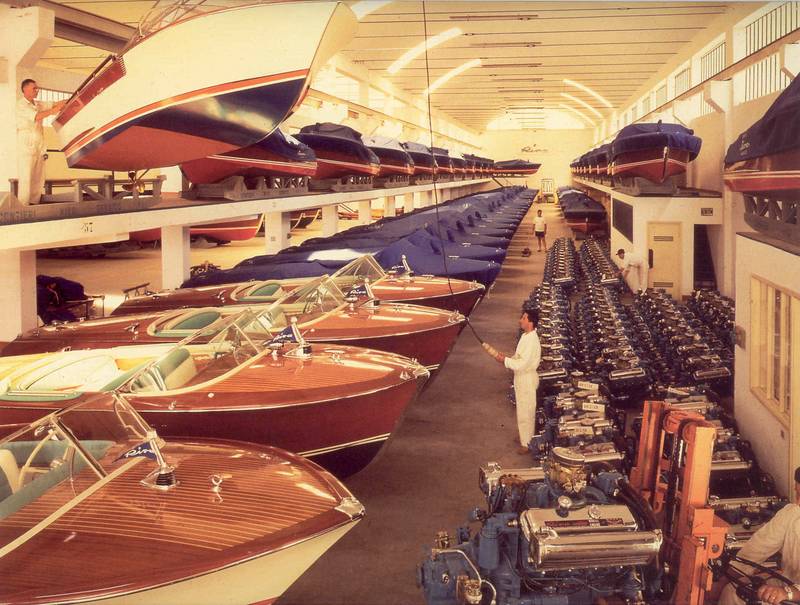
Even the workers had color coded overalls associated with a specific boat model or a specific type of work, like the paint shop. This also enabled Carlo to keep track of people and make sure they wasn’t just drifting around…
He took pride in delivery on time, and accepted penalties up to $ 100 per day of delay without blinking. He never had to pay a single penalty!
His greatest fear was that something like a strike in the U.S. would stop the flow of engines for his boats. This led to his build up of a warehouse that held 500 engines, more than needed for a full year.
The Riva’s and celebrities. The world’s most recognized and spread brand on water.
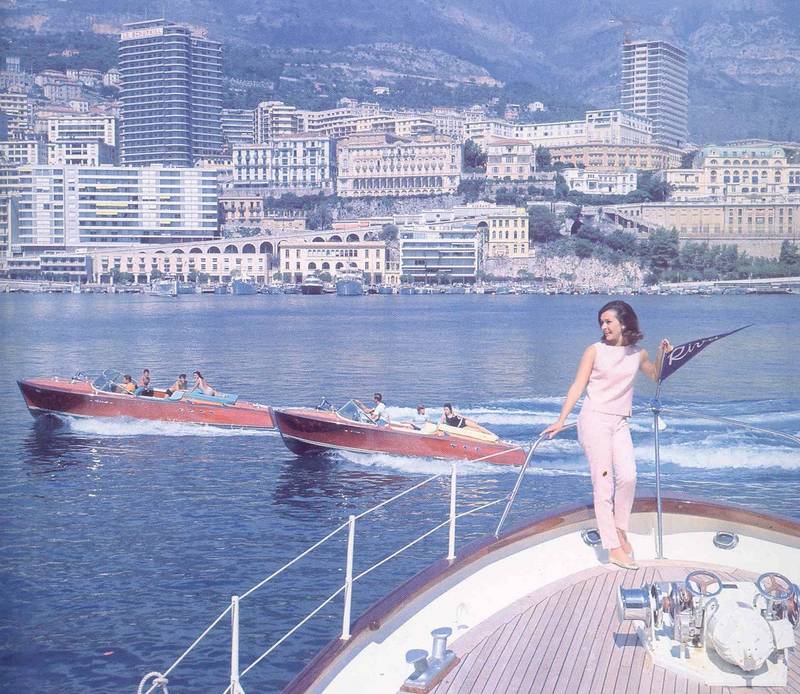
Even before Carlos time as the head of the yard many boats were ordered by famous people, but more locally and mainly in northern Italy.
In the early 50’s, driven by an increasingly growing celebrity culture, and perhaps thanks to Carlos design and reputation, Riva, along with Rolls Royce, came to be the absolute proof of success and power.
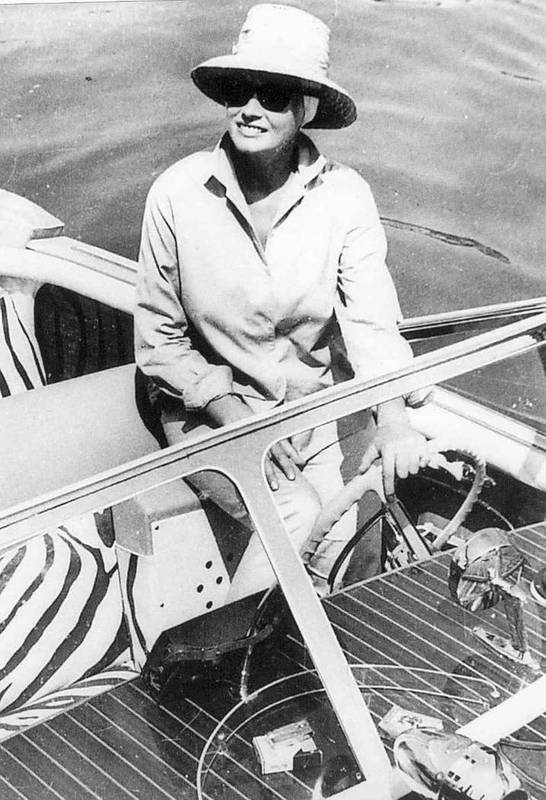
The number of kings, sheiks, princes and princesses, successful industrialists, actors, singers, sports heroes and playboys in general who owned a Riva is almost countless.
Anita Ekberg obviously had her own Riva with zebra striped outfit. Likewise, Brigitte Bardot and Peter Sellers to just name a few. The number of boats that were shipped to the Middle East were countless. Many boats were shipped by air and sometimes the cost of transportation exceeds the price of the boat!
Some new Riva’s also came to Sweden and the importer NK Kristensson. The most well known Swedish buyers of that time was the publisher Mr. Bonnier and the Mercedes importer Mr. Philipson who bought their Super Aquarama’s in 66 and 67.
Design, even of the smallest details.
What marks a Riva more than anything else, in my personal opinion, is Carlo Rivas absolute sense of beautiful design combined with functionality.
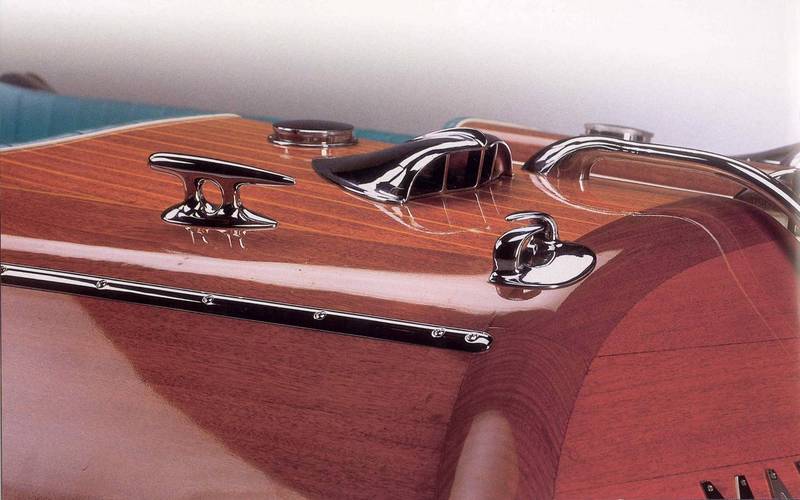 It’s only when one begins to examine a Riva in every detail that you realize the effort that has gone into every detail. Not a single fitting on a Riva is a standard product.
It’s only when one begins to examine a Riva in every detail that you realize the effort that has gone into every detail. Not a single fitting on a Riva is a standard product.
Everything is custom designed! Even small details like cable holders in rubber was produced in a dozen different sizes and fitted with the Riva logo, probably because no standard product good enough was available.
Innovative Technology.
When it came to finding solutions worthy of his boats Carlo never waived any costs. At an early stage all Riva’s got a steering box, just as a car, with a long rod all the way through to the rudder. Maybe not a new invention, since it had been used in American boats for many years, but it gave an easy and absolutely backlash-free control, though it was an expensive solution.

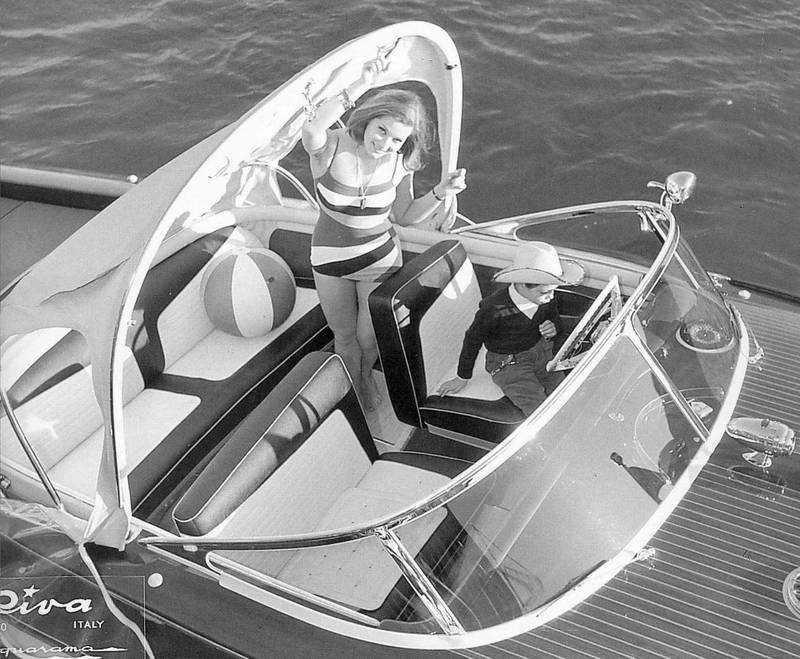 Carlo was probably one of the first to introduce a porcelain WC in the cabin of a small runabout with the Tritone model. The spring assisted anchor line drum, introduced with the Aquarama in 1962, was 20 years later introduced like a novelty in Sweden, but without the spring that rolled the rope back…
Carlo was probably one of the first to introduce a porcelain WC in the cabin of a small runabout with the Tritone model. The spring assisted anchor line drum, introduced with the Aquarama in 1962, was 20 years later introduced like a novelty in Sweden, but without the spring that rolled the rope back…
From 1956 some models are fitted with a real cabriolet hood as on the contemporary American cars. In 15 seconds you have a perfect roof and unused it’s hidden under the cushions behind the rear seat. Not many years ago the boat magazines celebrated the Finnish boat builder Fiskars when they introduced a simple “hood garage” behind the rear seat for the “Buster” boats…
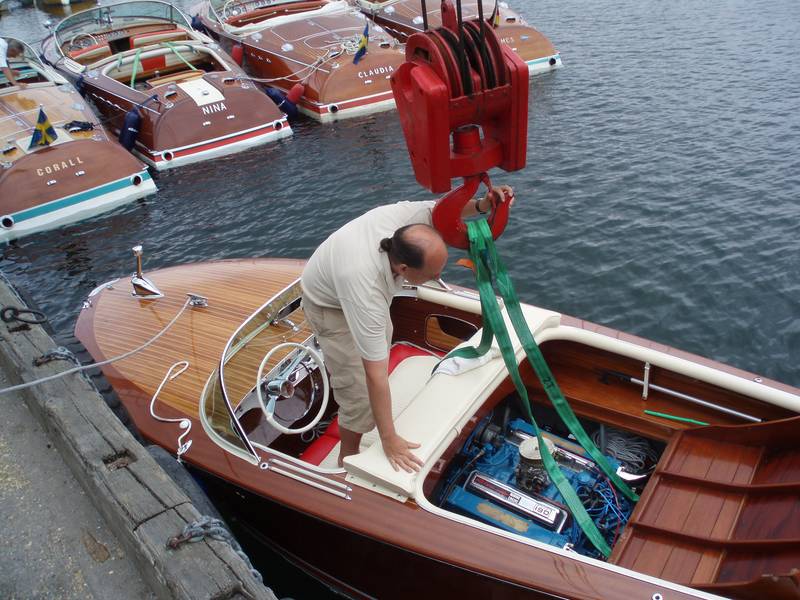 A Riva is never lifted in slings on the outside, as all boats have built-in lifting eyes for crane lifting. All Riva’s have also a special cradle that provides a perfect relief of the hull during transport and storage on land.
A Riva is never lifted in slings on the outside, as all boats have built-in lifting eyes for crane lifting. All Riva’s have also a special cradle that provides a perfect relief of the hull during transport and storage on land.
Cantieri Riva reaches its peak.
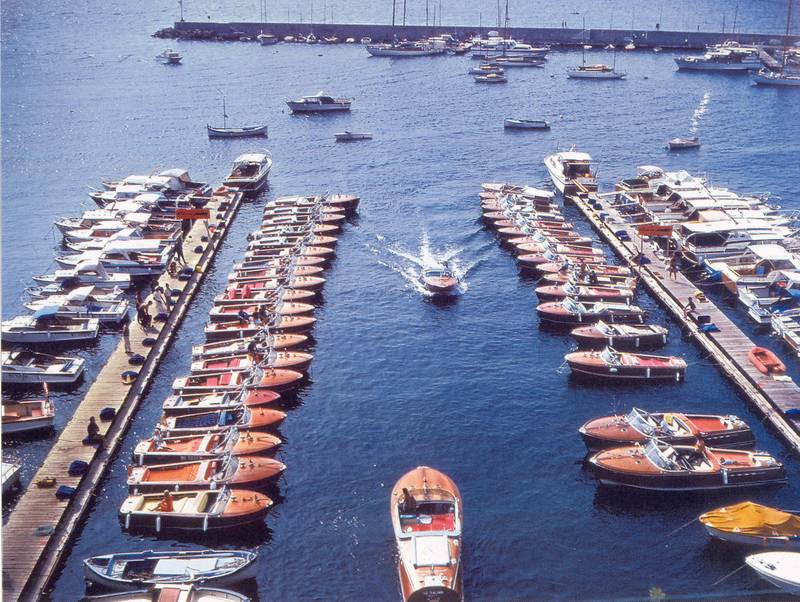 In 1969 the yard is at its peak and sales reaches 256 boats during the year. At same time storm clouds is piling up at the horizon. A general left wind in Europe at this time results in increased activity by the worker union’s and in the autumn many small strikes occurs.
In 1969 the yard is at its peak and sales reaches 256 boats during the year. At same time storm clouds is piling up at the horizon. A general left wind in Europe at this time results in increased activity by the worker union’s and in the autumn many small strikes occurs.
Carlo took these strikes as a personal insult, because he felt that he always had had a personal and good relation to all his employees. Although Carlo accepts the demands of the unions’, and even offers to pay more than they ask for, strikes continue to cripple the yard now and then.
In due time Carlo had enough. One morning he pick up the phone and calls the head of the Whittaker corp. in Los Angeles, who showed interest to buy a part of the Riva yard some years back. Carlo’s message is clear and simple: Buy all or nothing!
2 weeks later the deal is completed and Carlo Riva is no longer the owner of Cantieri Riva.
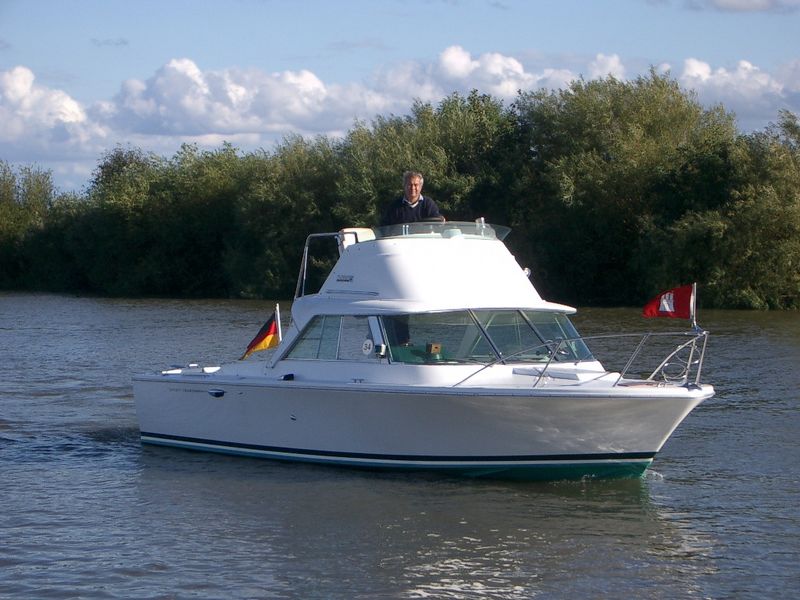 Carlo was now appointed as the CEO of the yard. The first fibre glass boats, based on U.S. Bertram boats, are introduced in the model program. Wooden boats are still built, but sales and production falls rapidly after 1972. Gradually, Carlo and the yard will separate more and more.
Carlo was now appointed as the CEO of the yard. The first fibre glass boats, based on U.S. Bertram boats, are introduced in the model program. Wooden boats are still built, but sales and production falls rapidly after 1972. Gradually, Carlo and the yard will separate more and more.
He was now working mostly with the design and sales of larger yachts, and had in 1971 started up his own design agency “Carlo Riva Yachting Corporation”. At the same time he was busy taking care of his other businesses, like RAM (a special service and restoration yard for the Riva’s), the harbor in Rappallo and Monaco Boat Service. In 1972 he finally leaves Cantieri Riva and hands over his office to his brother in law Gino Gervasoni. 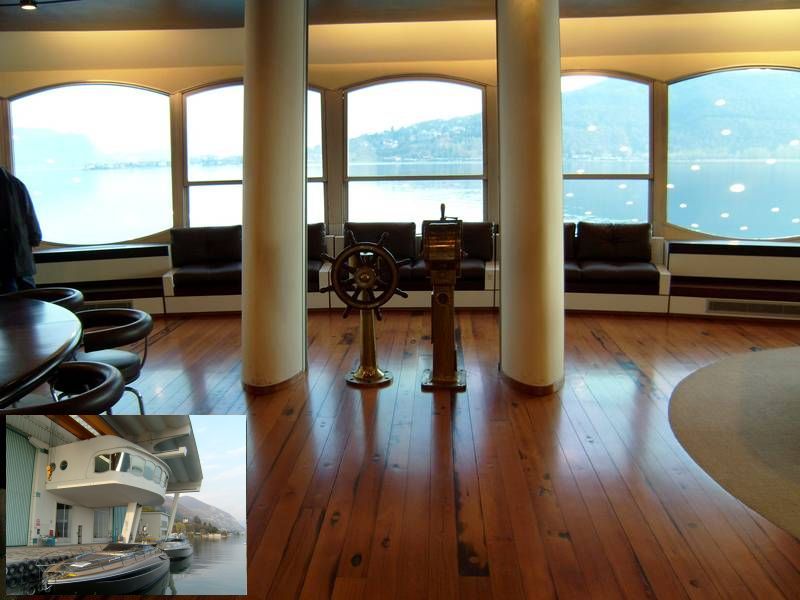
Riva’s most successful years was over and the yard had a stormy future ahead with many new owners. Probably because of the very strong brand, the yard survived and is now a division of the Ferretti group, the owner of a number of large yards and recently bought by a Chinese industry group.
Today’s production consists mainly of larger yachts from 50 feet and up, although some retro Riva’s have been launched in recent years. The latest one is the Riva “Iseo” with size, looks and function as a direct inheritance of the classical Aquarama.
The model Aquarama Special was the only wooden boat to survive into the mid 90’s and the last ones were sold in 1996.
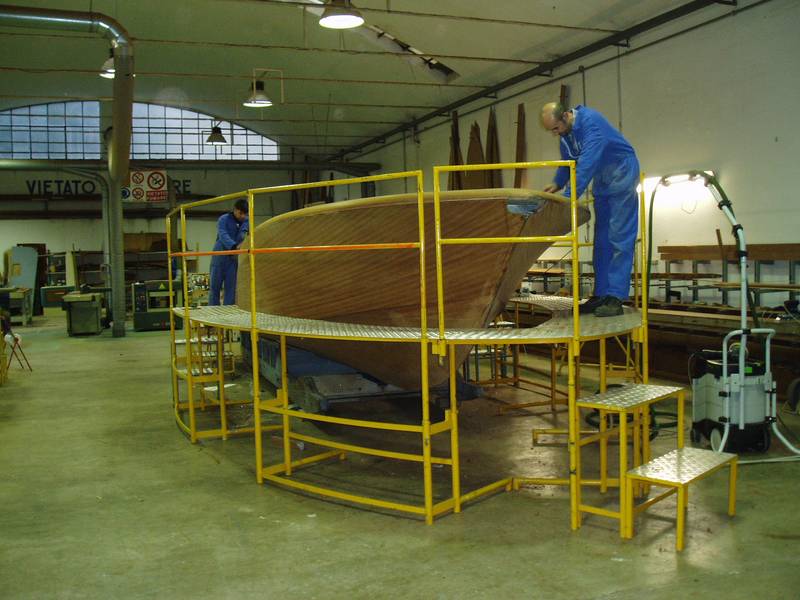 Carlos legacy lives on in the family.
Carlos legacy lives on in the family.
RAM (Revisione Assistenza Motoscafi) in Sarnico was founded by Carlo Riva already in 1957 and was one of several service yards with explicitly focus on the Riva boats. He believed that the world’s best boat also should have the world’s best service!
RAM, which is located next to the Riva yard, is now run by a close relative and is today considered as the world’s best restoration yard for the classic Riva boats. (2022 note: Recently bought by the Riva Yard)
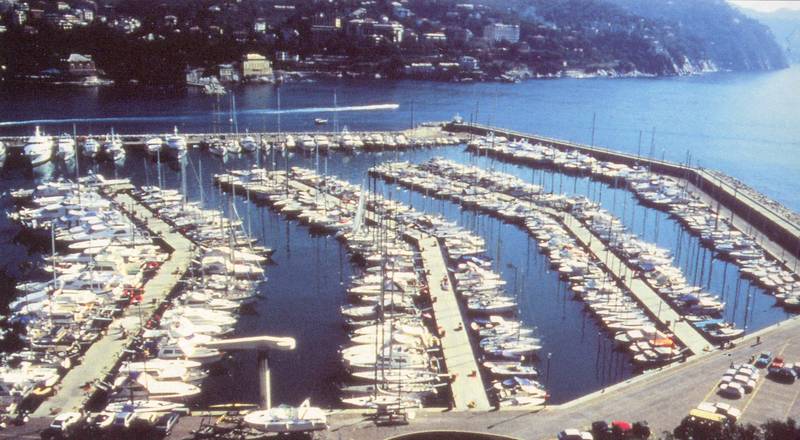 The port of Rapallo, built by Carlo Riva in the early 70’s when he had left the yard, bears his name: “Porto Carlo Riva”.
The port of Rapallo, built by Carlo Riva in the early 70’s when he had left the yard, bears his name: “Porto Carlo Riva”.
Monaco Boat Service, which is still one of the largest Riva dealers and started by Carlo in the 60’s, is now run by his daughter Lia and her husband.
A boat for enthusiasts!
In Sweden we have an unusual amount of classical Riva boats, especially if you consider our small population and the somewhat chilly climate… The reasons are many, but an important one is that Swedes always have been interested in boats. Our inheritance goes back to the Vikings and today we have one boat on every seven Swedes, compared to one boat on every 50 Germans for example.
Except for a few one, most Riva boats came to Sweden in the late 70’s and the following decade. At that time the rather old and used Riva’s were cheap, and probably sold in favor of a new boat in the revolutionary material Glass fibre Reinforced Plastic… Many of the boats were in poor condition, but luckily there were a number of enthusiasts who saw the beauty and value of the boats. This instinct saved a number of Riva’s from being wrecked.
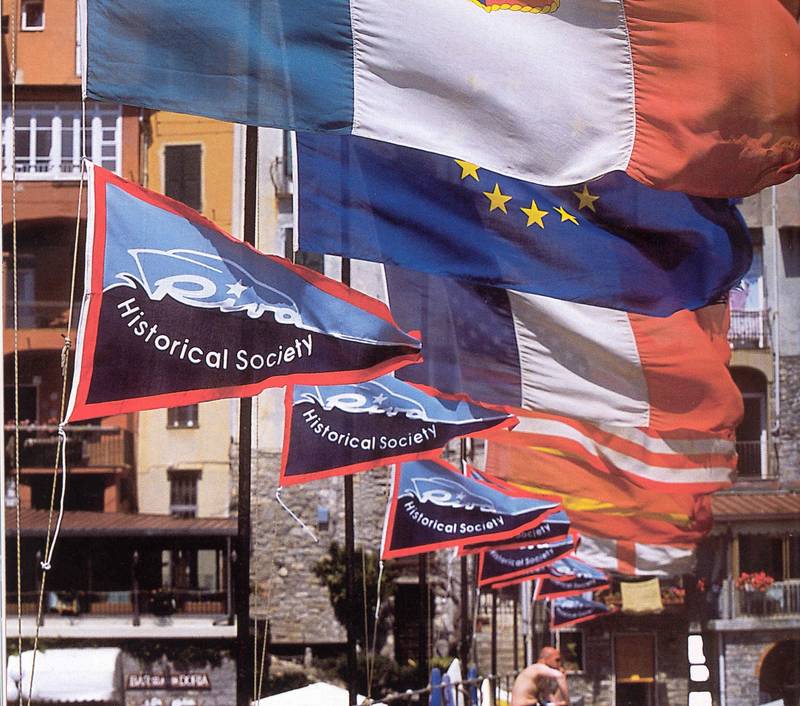
Riva Historical Society and the Riva Clubs.
In 1993 the Swedish Riva Club was formed as one of the first in the world. A couple of years later Riva Historical Society (RHS) was founded by some fans in Milan, not far from the Riva hometown Sarnico at Lake Iseo.
Among the founders were the architect Piero Gibbelini, Carlo Riva himself, and many enthusiasts from all around the world. One of those was Per Wadström, one of the founders of the Swedish club and now the Vice President of Riva Historical Society.
One of RHS main tasks is to find and register all classic Riva boats that still exist. The organisation also arrange one or more meetings each year and publish the annual Riva calendar and the quarterly magazine “vivariva”. In addition a yearly course, “Riva Judges”, is held in springtime. 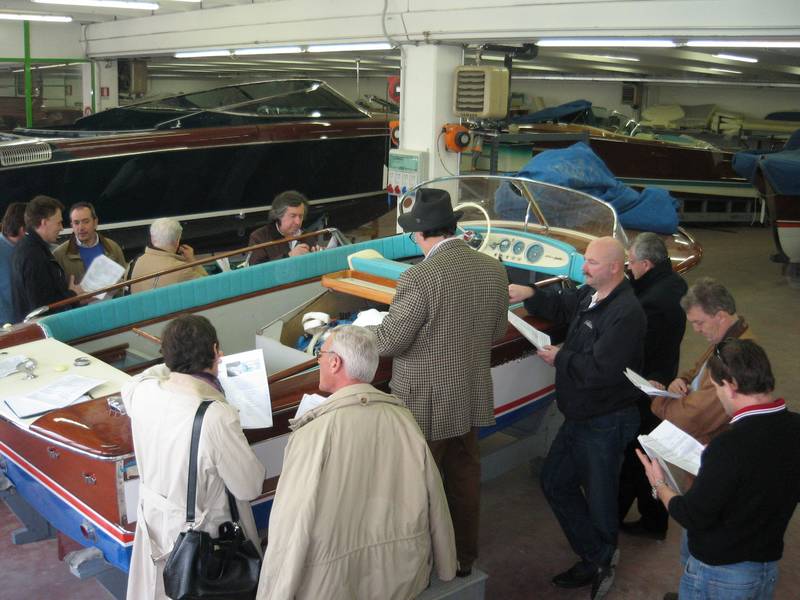
The course aim is to spread the knowledge about the original Riva’s, their building technique and original appearance in order to keep the boats in the state as they left the yard half a century ago.
Associated with RHS is currently 12 Riva clubs from different countries in Europe and the United States. Our Swedish club is one of the oldest and currently has about 50 members with as many boats. In total there are about 750 members affiliated to the RHS through their clubs.
The exchange between the different clubs are important. At our annual Swedish meeting usually about half of the boats and the participants come from other European clubs. Some pictures from our Swedish meetings can be found in our gallery.
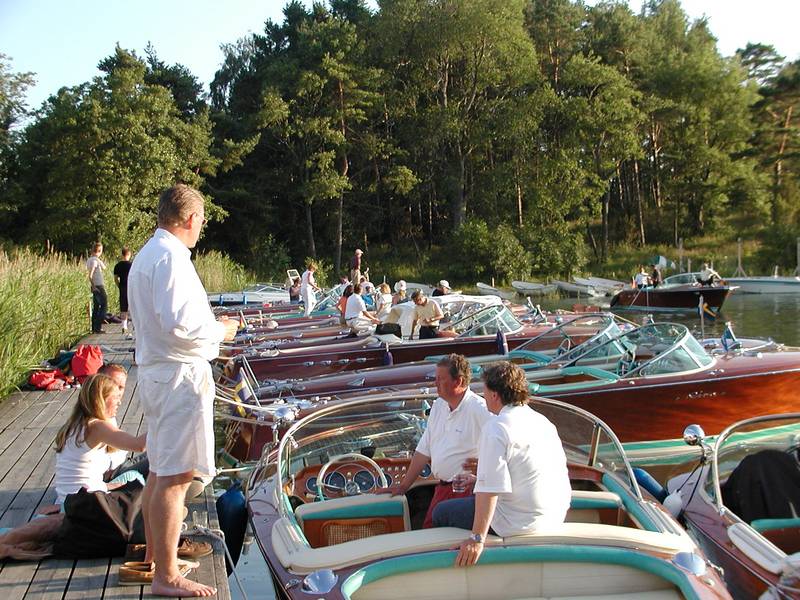
Perhaps as a result of RHS and the work of the local clubs, the interest for old Riva’s have increased a lot over the last 10-15 years. At the same time the price for these boats have increased by 3-400%.
The result of this development is that more “wrecks” appears out of barns for restoration, but also a new market for fake Riva’s, sold to unsuspecting buyers who think they have come across a Riva at a great price! If you want to be sure, join a RHS associated Riva club before you waste your money…
If you want to read more about Carlo Rivas legendary boats you should also visit the RHS website and other related web sites that you can find in our Link gallery.
Arriva!
Olle Erlandsson
President of Riva Club Sweden
Ref: Facts and pictures mainly from the books “Riva the Myth, Carlo the Legend I – IV” by Piero Gibbelini, President of Riva Historical Society (RHS).

